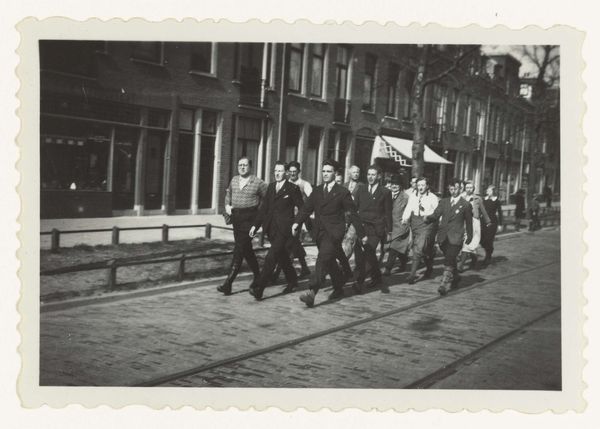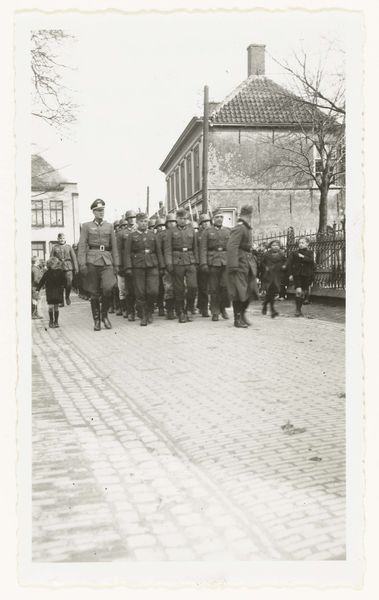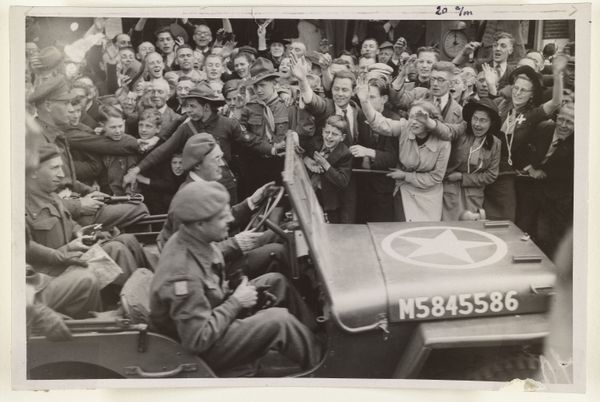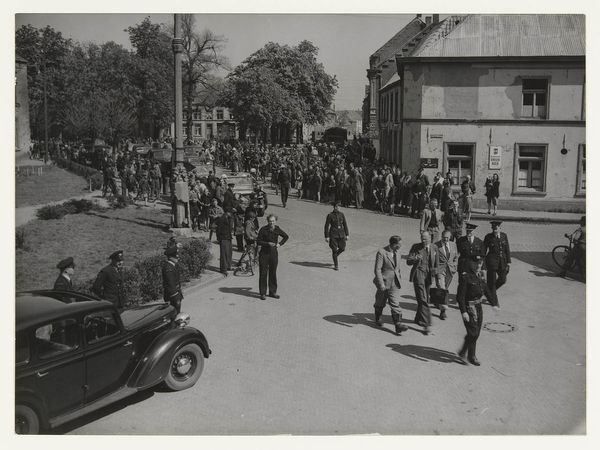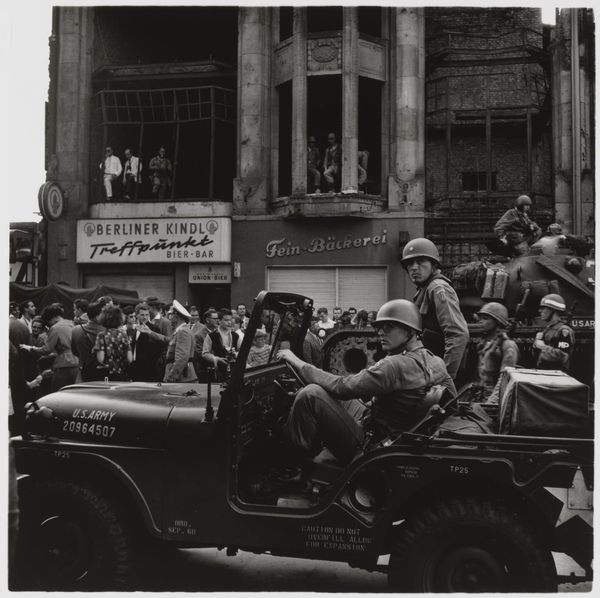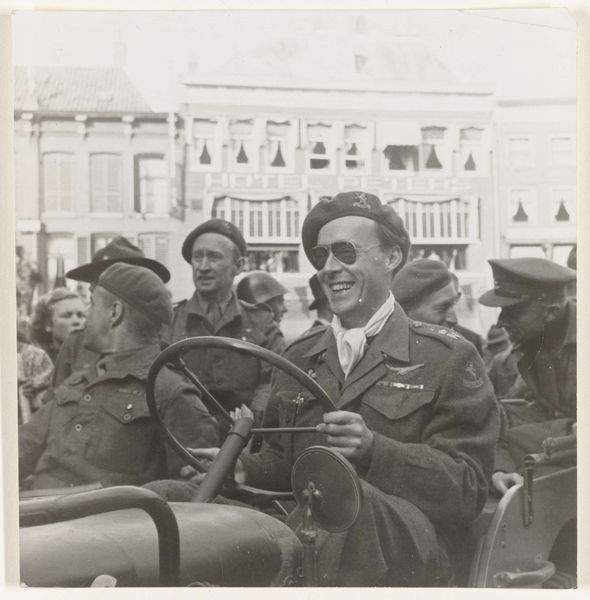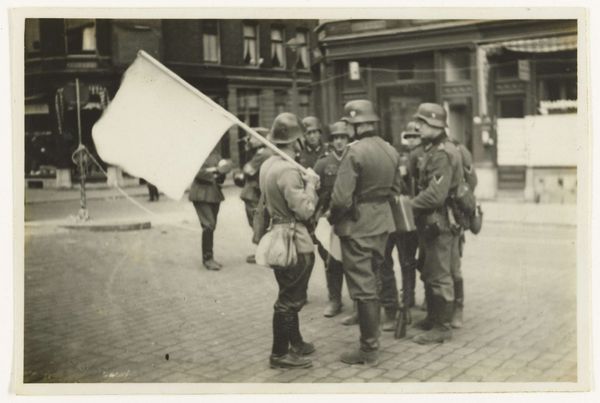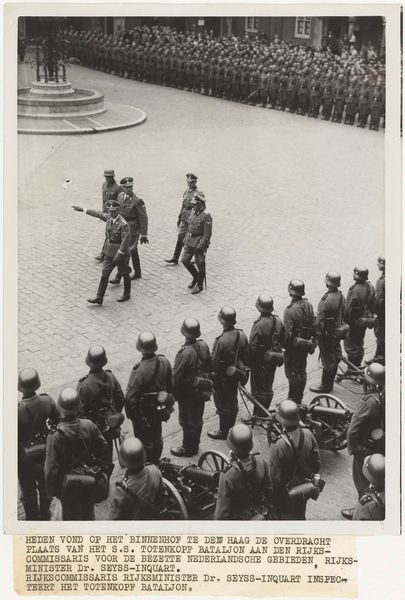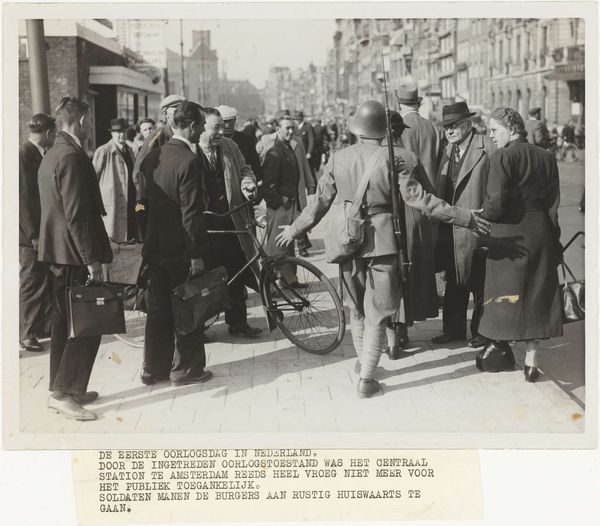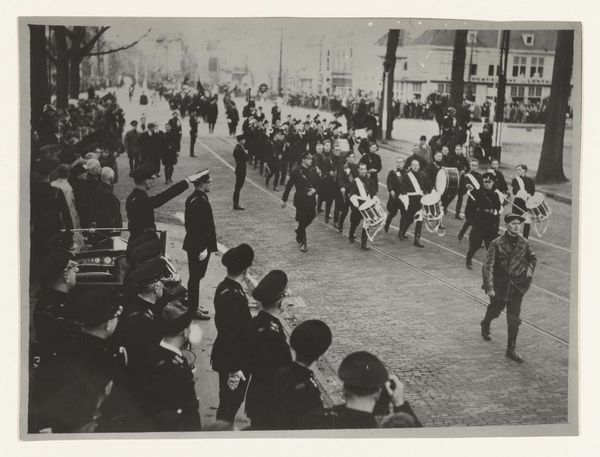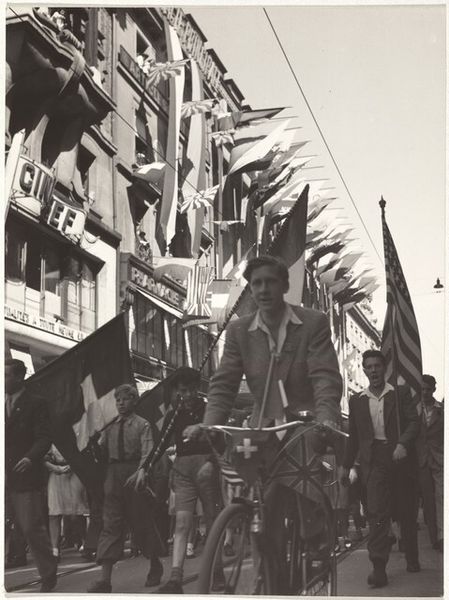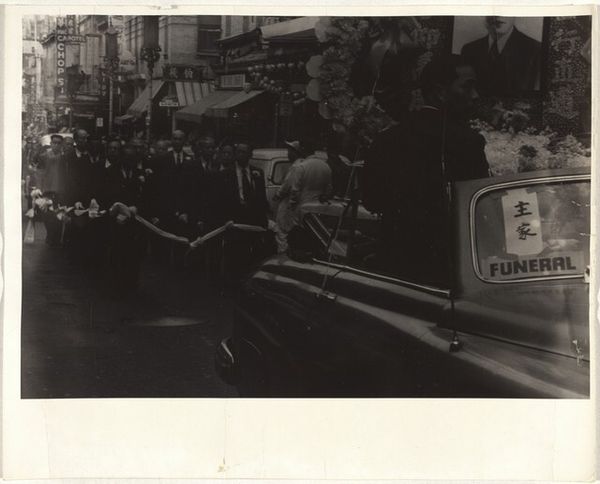
print, photography, gelatin-silver-print
#
print photography
# print
#
war
#
landscape
#
outdoor photograph
#
archive photography
#
street-photography
#
photography
#
historical photography
#
gelatin-silver-print
#
cityscape
#
history-painting
Dimensions: height 6.5 cm, width 9.5 cm
Copyright: Rijks Museum: Open Domain
Editor: Here we have an unsettling photograph, "Duitse leger in Rotterdam" or "German Army in Rotterdam," taken sometime between 1940 and 1945. It's a gelatin silver print. I’m struck by the banality of the scene despite the implied threat – people going about their day alongside the soldiers and tanks. What stands out to you? Curator: Well, for me, it's the material record of production and reproduction inherent in a gelatin silver print documenting this specific event. This wasn't simply about artistic vision; it was a mass-produced artifact shaping and reflecting contemporary ideology. The labor involved, from the photographer's presence in a war zone to the printing process itself, speaks volumes. Editor: I see your point. The creation process reflects the social context so we understand the purpose goes far beyond simply "taking a picture". But how do you think its display in a museum alters that original purpose? Curator: By elevating it to the realm of 'art', we risk detaching it from the very material conditions and power structures it represents. We need to ask: who controlled the means of photographic production and distribution during the occupation? Whose narrative was amplified and how does this archive reflect a wider consumption of war materials? How does it change from a disposable medium into a valuable, collectable art work? Editor: That is thought provoking. I hadn’t considered how its existence is shaped by those very questions. Curator: Indeed, it forces us to think about how photographic records, initially tools of propaganda, become historical documents with new layers of meaning that have altered the perception of its materials through time and history. Editor: Right, it is almost like its value is now in the historical information itself. Curator: And its transformation into a prized museum piece requires us to ask critical questions. Editor: It seems like focusing on its historical consumption provides another method to unpack meaning. Thank you. Curator: My pleasure. Approaching art this way offers a rich understanding.
Comments
No comments
Be the first to comment and join the conversation on the ultimate creative platform.

